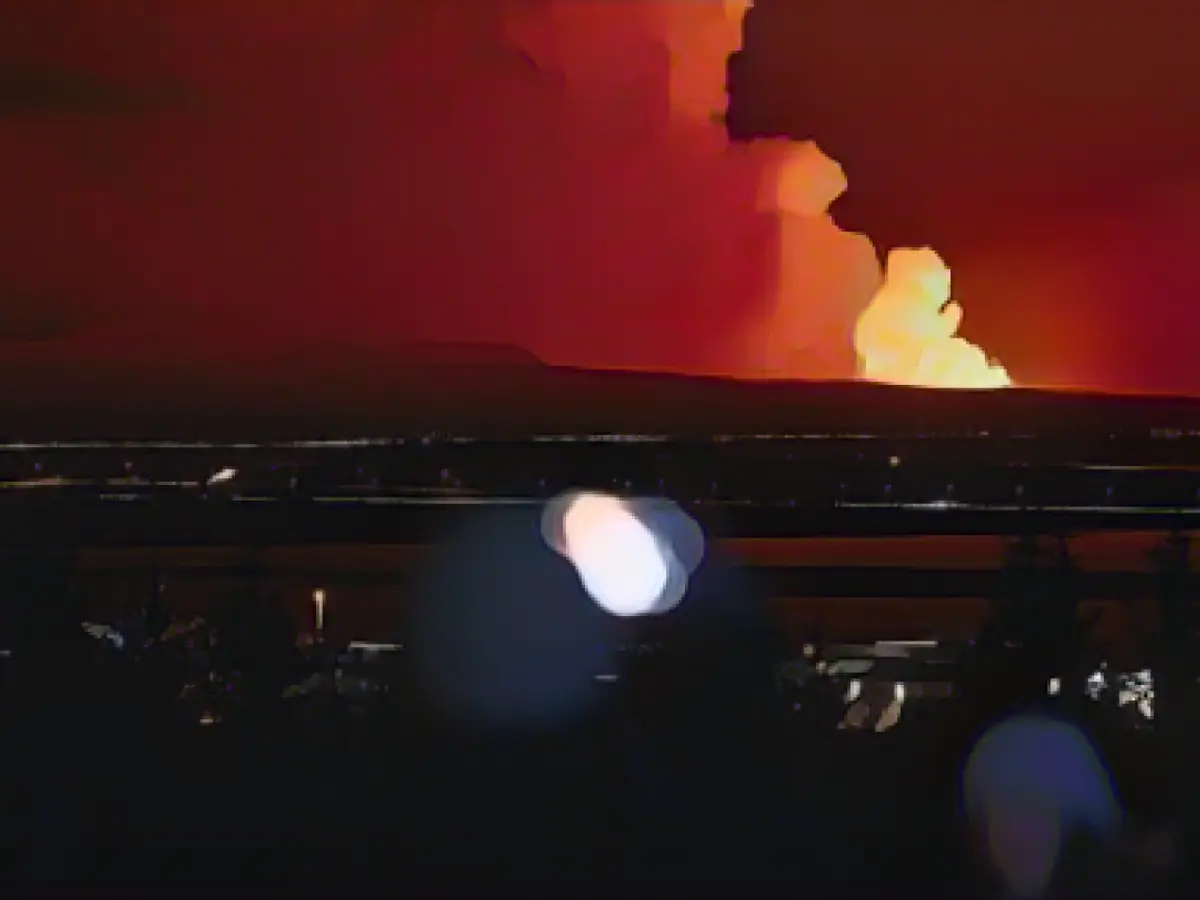Reykjanes Peninsula - Volcanic eruption in Iceland after series of earthquakes
After a series of earthquakes lasting several weeks, there was a volcanic eruption on the Reykjanes Peninsula in Iceland late on Monday evening. This was announced by the Icelandic Meteorological Office. The eruption began north of the town of Grindavík shortly after 10 p.m. (local time), the institute warned on its website. Films and photos on Platform X showed orange-red glowing lava fountains shooting into the dark night sky and illuminating it brightly. The police asked onlookers not to approach the lava. The town of Grindavik had already been evacuated in November due to concerns about an eruption.
The fissure widened over the course of the night and grew to around four kilometers by early morning, according to a volcanologist. According to experts, the fissure is many times longer than during the eruptions on the Reykjanes peninsula in recent years. The lava flow is also much larger, with around 100 to 200 cubic meters of lava flowing out of the fissure every second. The civil defense declared an emergency level.
Volcanologist Ármann Höskuldsson said that the fissure extended towards Grindavík. Fortunately, no lava was flowing towards the power stations there. Buildings are not currently at risk, he said. Höskuldsson told the Icelandic radio station RÚV that he expected the eruption to last between a week and ten days.
President recommends following instructions from authorities
According to local media reports, geophysicist Benedikt Ofeigsson from the Icelandic Meteorological Authority said that the eruption had been localized at the Sundhnjúka crater. It is currently difficult to say whether infrastructure or the town of Grindavík are in danger. Iceland's President Gudni Jóhannesson wrote on Facebook that it was still unclear what damage the eruption could cause. He asked local people to follow all the recommendations of the emergency services "at this dangerous moment". The mayor of Grindavík, Fannar Jónasson, said that he was somewhat surprised by the timing of the eruption, as the earthquakes had calmed down somewhat in recent days.
However, the eruption had been feared - hundreds of earthquakes had occurred in recent weeks. The fishing village of Grindavík was evacuated in November as a result. Around 4000 people were brought to safety. Residents of Grindavík were recently allowed to re-enter their homes during the day. However, they were not allowed to return completely.
The Blue Lagoon, a tourist attraction just a few kilometers from the town, was only reopened at the weekend after being temporarily closed. It is located only around 40 kilometers southwest of the capital Reykjavik. No guests were present at the time of the eruption, according to the most famous tourist attraction on the island.
Recent eruptions hit uninhabited area
It is not only the lava flows that are dangerous for people, but also the ashfall and toxic substances released. Beneath the town on the Reykjanes Peninsula, where volcanic eruptions have already occurred three years in a row, a magma tunnel around 15 kilometers long runs from the northeast to the southwest into the sea. The most recent eruptions, most recently in July, always hit uninhabited areas.
The land of glaciers, volcanoes and geysers lies on the seam between the North American and Eurasian plates. For this reason, seismic activity is frequent on the island, which has a total population of just under 390,000. Volcanic eruptions with spectacular images always attract onlookers and tourists. In total, there are more than 30 active volcanoes on the North Atlantic island.
Read also:
- Snow chaos further restricts Bavaria
- Unanimous decision: faster wolf culls possible
- The year of climate records: extreme is the new normal
- Snow and ice paralyze southern Germany
The eruption on the Reykjanes Peninsula occurred close to the town of Grindavík, where an earthquake series had led to an evacuation in November. Authorities urged people not to approach the lava due to safety concerns, with Grindavík having already experienced evacuation due to prior volcanic activity. The volcanic activity on the Reykjanes Peninsula, known for its frequent seismic activity, is located near the capital city of Reykjavik and the popular tourist attraction, the Blue Lagoon.
Source: www.stern.de






